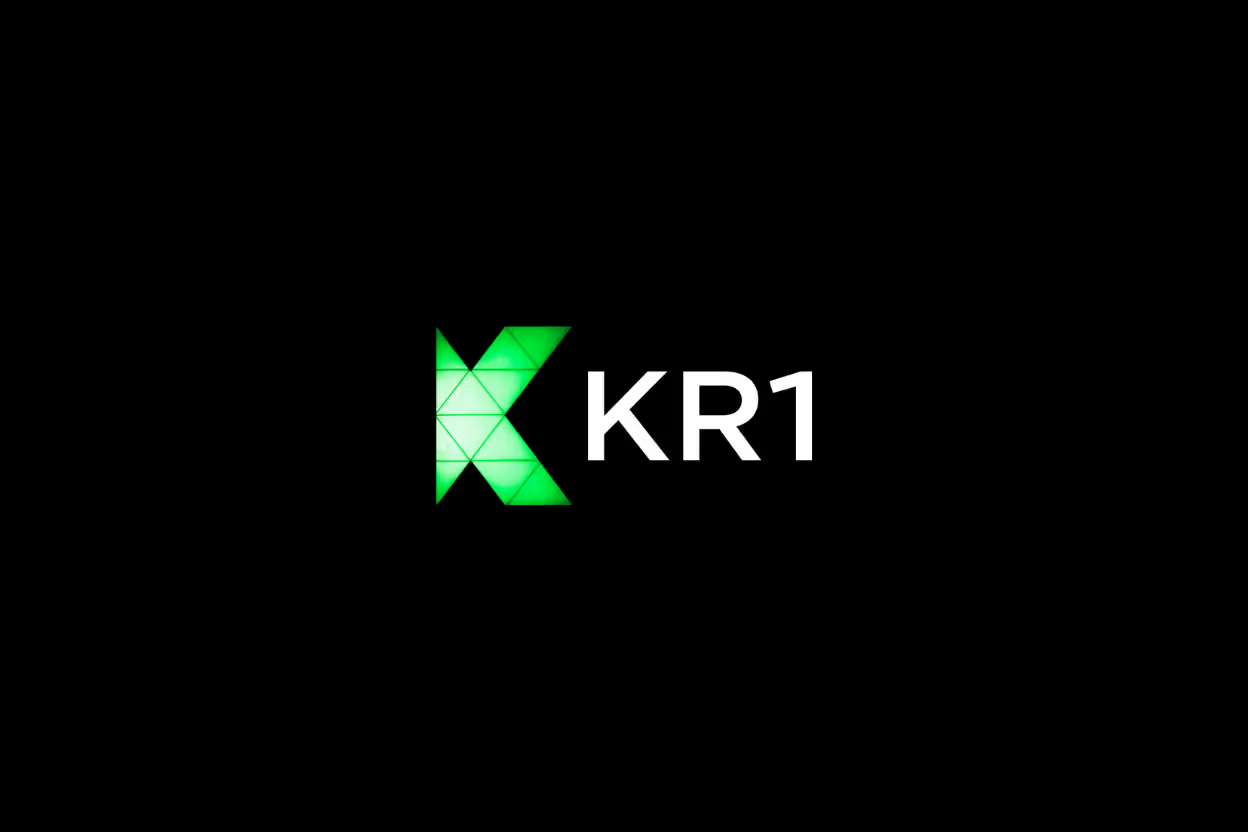A narrative in Web3 is more than a simple pitch—it's the story that shapes how people see your project or product. In this space, a strong narrative cuts through noise and draws early attention from both users and investors. Choosing the right story can be the difference between a product that gains traction and one that never takes off.
Founders and teams who match their vision to one of Web3’s proven storylines often see better engagement and results. Why? Narratives help explain complex ideas, create trust and invite participation from your community. Not sure if your current story hits the mark, or curious what makes a “conversion” narrative in Web3? Let's explore the three story patterns that consistently drive action and growth in this space.
Owning a Piece: The Participatory Narrative
Ownership transforms passive users into passionate supporters. In Web3, projects that let people hold a stake turn their communities into insiders, not just spectators. This participatory story stays powerful because it’s more than marketing hype—people see real proof of their involvement and get seats at the table for decisions and upside. Wondering why some projects experience wild, organic growth while others fizzle? Much of it comes down to how deeply people feel they “own” part of the story.
Making the User an Insider: Explore ways Web3 projects enable people to feel like insiders or early supporters. Provide practical tips for founders.
Great Web3 communities don’t just “grow a user base”—they build families of early backers who feel seen, respected, and included. Here’s how top projects pull this off:
- Token rewards for participation: From staking to voting, offer meaningful incentives to users who help the project in its early stages.
- Transparent communication: Share behind-the-scenes updates, roadmaps, and tough decisions. Open Telegram channels, regular AMAs, and clear governance platforms can make users feel like true insiders.
- Early access and privileges: Drop testnet invites, allowlist spots for token/NFT sales, or special Discord roles for those who show up early.
- Celebrating contributors: Shine a spotlight on community members who help—feature them in your newsletter or give shout-outs in Discord.
- Shared decision-making: Roll out community polls or full-fledged governance votes that truly impact direction.
Founders often ask: “How early is ‘early’ to give ownership?” The answer: earlier than you think. Even simple on-chain badges, participation points, or public thanks can build this sense before a formal token launch.
Examples of the Ownership Narrative in Action: Show short case examples of successful projects leveraging the participatory angle. Compare approaches used by leading protocols, DAOs, or NFT projects.
Many of Web3’s fastest-growing communities thrived thanks to ownership at the core. Here’s how some leading teams have approached it:
- Uniswap: Known for launching its UNI governance token to retroactively reward early users and LPs, Uniswap turned active users into stakeholders overnight. This spurred loyalty and aligned incentives for platform growth.
- Friends With Benefits (FWB): This social DAO only allows entry via community-owned tokens. Each member owns a slice of the group — voting on direction, partnerships, and even event themes. Exclusivity plus participation drives active engagement and word-of-mouth growth.
- Bored Ape Yacht Club (BAYC): Early NFT holders didn’t just own digital art; they got access to a private club, member events, and even commercial usage rights for their apes. This sense of ownership extended far past the initial sale and built one of the strongest brands in the space.
- ENS (Ethereum Name Service): By airdropping ENS tokens to long-time users, the project let its earliest supporters guide key protocol decisions through on-chain governance.
Are there risks with this approach? Of course. Over-promising or distributing too much, too soon, can backfire. But for founders aiming to build true loyalty and organic evangelism, inviting users to own a piece—and giving them a reason to care—is hard to beat.
Curious how these strategies compare with pure speculation-driven projects or traditional startups? The ownership narrative rarely loses steam and often creates more resilient communities.
Building Trust: The Transparency Narrative
Trust isn’t a given in Web3. Many founders wonder if “being transparent” can really drive conversions, or if it’s just another buzzword. Transparency, when done right, becomes the difference between a hesitant visitor and an enthusiastic supporter. It lets people see under the hood, connect with your team, and believe in the journey—even if there are bumps along the way.
Projects that lead with openness attract both savvy users and investors who appreciate honest storytelling. But fostering that trust takes more than good intentions; it’s about consistent, visible actions.
Ways to Signal Transparency: Step-by-Step Actions Teams Can Take
You don’t need fancy PR or endless Medium articles to prove your openness. Smart teams use a mix of practical steps to clearly signal transparency, even in a noisy space:
- Open Source Your Code or Smart Contracts
- Host your code on GitHub or a similar public platform.
- Encourage code reviews and even bug bounties.
- Clearly document updates and improvements.
- Share Real-Time Project Dashboards
- Set up public dashboards for key metrics like wallet growth, TVL (Total Value Locked), or governance activity.
- Show progress on roadmaps, treasury balances, or proposal status.
- Update stats in near real-time, so your data matches your claims.
- Communicate Frequently and Honestly
- Hold regular AMAs and community calls—even when there’s tough news.
- Publish weekly or monthly recaps covering wins, challenges, and next steps.
- Create public channels (Discord, Telegram groups) for unfiltered community feedback.
- Make Governance Participatory and Visible
- Run all proposals and votes on-chain when possible.
- Publicly archive past decisions and forum discussions.
- Welcome new contributors to join working groups or sub-DAOs.
- Publish Audit Reports and Risk Analyses
- Release third-party audits as soon as they’re complete.
- Summarize findings in plain language for non-developers.
It often starts with a simple question: Would a first-time visitor to your project be able to find key information without digging or asking? If not, it’s time to make your transparency more visible.
Pitfalls: When Transparency Backfires
Is there such a thing as too much transparency? Absolutely. Even the best intentions can backfire if teams aren’t careful. Avoid these common mistakes that actually erode trust:
- Overpromising and Under-Delivering
- Teams sometimes hype features or partnerships before they’re locked in. When reality falls short, the backlash is swift and public.
- Real-world story: A popular DeFi protocol teased major integrations on its roadmap, only for the launch to be delayed by over a year. Once-loyal community members voiced frustration and many exited the project.
- Sharing Sensitive or Confidential Information
- Revealing everything (including team conflicts or security plans) can create more uncertainty than assurance.
- Security incidents published too early have invited exploit attempts in the past.
- Chaotic or Inconsistent Communication
- Too many updates, conflicting statements, or irregular info drops confuse users more than help them.
- Founders should avoid setting deadlines they can’t keep or making promises off the cuff during AMAs.
- Public Governance Fatigue
- If every micro-decision requires a community vote, decision-making stalls. Users lose patience and engagement drops.
- One well-known DAO nearly stalled operations when every budget line required separate public debate, causing contributors to burn out.
Transparency isn’t about showing everything in real time, no matter the consequences. It’s about clear, predictable updates that show users and investors you have nothing to hide—and everything to share when it matters.
So, how do you strike the right balance between being open and keeping your project on track? Aim to be as open as possible with facts, roadmaps, and results, but don’t make promises you can’t keep or reveal information that opens up risks. Trust grows strongest with true accountability, not just oversharing.
Mission-Driven: The Values Narrative
A values narrative sets the tone for your entire Web3 project. When people sense a real mission, they’re more likely to buy in—not just with their wallets, but with effort, ideas, and loyalty. Being mission-driven isn’t about waving a banner with buzzwords. It’s about showing, at every touchpoint, that your project stands for something and lives up to it. Founders might ask, "How do I convince users our values are real?" The answer comes from both messaging and follow-through.
Turning Values Into Actionable Messaging: Share advice on crafting value-driven statements and integrating them into all project communications.
Clear values guide every message you send, whether it's a tweet or a detailed protocol update. Vague statements like "we care about decentralization" won't set you apart. Instead, get specific.
- Start with a statement that means something. Define your core value in a single, punchy sentence. For example, "We believe open access to financial tools should be the default, not the exception."
- Connect values to actions. When you explain a new feature or DAO proposal, link it back to why it matters for your mission. For example, “We’re adding non-custodial wallets to keep you fully in control—central to our belief in personal autonomy.”
- Repeat and adapt for every channel. Your homepage, pitch decks, documentation, and community posts should echo these statements in plain language.
- Invite feedback on your values. Ask users in Discord, Twitter or governance forums how you’re measuring up. What good is a value if it doesn’t shape daily decisions?
Keep messaging tight and real. Avoid mission drift in updates or campaigns. When users see steady alignment, they’re more likely to trust and advocate for your project.
Signals of Authenticity: Avoiding Empty Slogans: Guide founders on showing lived values through partnerships, code, and governance choices.
Words mean little unless actions back them up. This is where most projects slip—signaling values in ways that are all show and no substance. Want your mission to ring true? Focus on making each decision a signal of what you stand for.
- Choose partners carefully. Work with projects, auditors, and investors who share your standards. If you aim for environmental impact, don’t partner with high-energy waste platforms.
- Reflect values in your code. Open source isn’t just for devs; it’s a sign you believe in permissionless innovation. If user privacy matters, ship features that prove it (like encrypted messaging).
- Structure governance to reflect your mission. Does your DAO give everyone a voice or just a select few? If equality is key, let newcomers propose and vote.
- Own your mistakes. Transparency in failure is a test of authenticity. Admit what didn’t work, share your learnings publicly, and show what you’ll do differently.
- Celebrate value-driven choices. Share stories when your team rejects a tempting path that doesn’t align with values. Did you say no to a quick-fix funding deal that felt sketchy? Tell your community why.
Ask yourself: What would a skeptical outsider see if they joined your Discord or read your smart contracts? Would your lived actions match your slogans? If the answer is yes, you’re winning the long game.
Mission-driven projects inspire deeper engagement and turn users into advocates, not just participants. The more visible your values, the more your story cuts through the noise in Web3.
Choosing the Right Narrative for Your Web3 Project
Web3 founders face the challenge of standing out in a space where every project claims to offer something new. So, how do you know which narrative will help your project win trust, attract investment, and convince users to join you? Choosing the right story isn't about copying what's trendy, but about matching your project's strengths and vision with the deeper motivations of your target audience.
Different teams often wrestle with questions like “Are we telling the right story?” or “What will actually drive users to act, not just take notice?” The answer lies in understanding both your goals and what people in Web3 care about most. Let’s break down how to find, shape, and test the narrative that gives your project real traction.
Understand Your Project's Core Motivation
Before picking a narrative, founders should get crystal clear on their reason for building. Every strong story grows from a clear foundation. Ask yourself:
- What motivates our team to do this work?
- Who benefits most if we succeed (users, developers, DAOs)?
- Do we solve a problem no one else is addressing?
When you name your project's "why," it becomes easier to link your work to one of the three narratives—ownership, transparency, or values—that consistently convert in Web3. If your mission lines up with what actual users care about, your story will feel real, not forced.
Map Your Narrative to Your Audience
Web3 has a wide range of participants: yield chasers, builders, DAO contributors, NFT collectors, and first-time users. Your narrative should reflect both your core audience and the broader story in the market.
Consider these questions to guide your alignment:
- Are our users hungry for direct rewards, or do they crave a strong ethical stance?
- Does our audience have past experience with blockchain, or are they exploring it for the first time?
- What are they skeptical about—platform control, rug pulls, real decentralization?
If you’re building for builders, the transparency narrative might land best. Are your users mostly creative types or collectors? The participatory or ownership angle could be more compelling. If your mission pushes for a social good (like privacy or open finance), a values narrative will likely resonate strongly.
Test and Refine Your Story
Even with a well-matched narrative, you won’t get it perfect on the first try. Web3 communities are quick to spot when messaging feels off or fails to address real concerns. Early feedback is gold.
- Share your draft story in Discord or during AMAs and watch for genuine engagement—are people nodding, questioning, or ignoring it?
- Run small experiments: Try different headlines or homepage copy and see which sparks more signups or wallet connections.
- Compare stats before and after narrative shifts. Did your onboarding numbers climb when you started highlighting a value-driven mission versus rewards for participation?
Building a sticky Web3 narrative is less about slogans and more about proving, again and again, that your story matches what your project delivers. When users see this alignment, they’re more likely to join, contribute, and spread the word.
Avoiding Common Narrative Pitfalls
Many founders rush to mimic the hottest narrative, only to find that it doesn't work for them—or worse, it backfires. Skipping the strategic groundwork often leads to:
- Misaligned messaging: Promising radical decentralization when your protocol has admin keys.
- Flimsy value statements: Claiming to "empower communities" with little user input.
- Over-relying on hype: Chasing trends like “AI integration” or “real yield” without substance.
The toughest question you can ask is: “If we stripped away the narrative, does our product still stand up?” The most convincing narrative is built on evidence and lived experience, not just big claims.
By focusing on your core motivation, mapping to audience needs, and letting your actions back your words, you’ll build a narrative that not only converts, but lasts. Every winning Web3 project you know today started by asking hard questions about their story—so start there, and iterate fast.
Conclusion
Storytelling sets winners apart in Web3. Strong narratives don’t just attract attention; they form conviction and community. When founders base stories on real ownership, proven transparency, or clear values, users recognize the difference.
Focus your energy on substance over slick messaging. A well-told story only works if your project delivers on its promises. Are you still relying on hype or missing a chance to show what really makes your project stand out? Take a close look at your current narrative—where does it succeed, and where does it fall flat?
Ask yourself, is your project’s story aligned with what users need most? Or is it time to rethink your message and put actions behind your words? Reflect on the signals you’re sending and consider whether your story invites real participation and trust.
Thank you for reading and investing your time. If you’re serious about building lasting impact in Web3, revisit your story regularly and invite feedback. Your next great narrative might already be taking shape—don’t let it pass you by.









